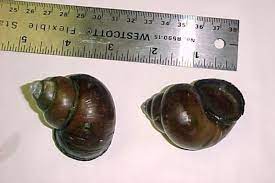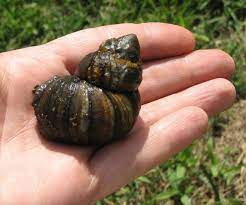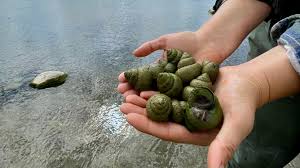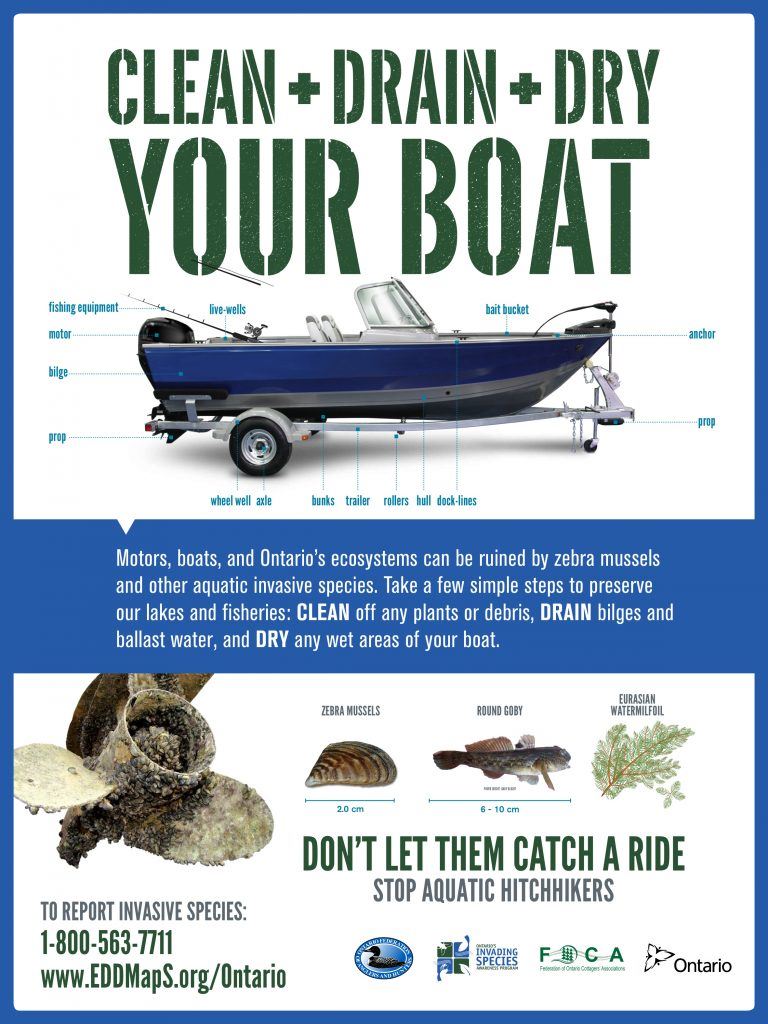invasive species
Protecting Our Lake and Property
On this page:
What makes a species "invasive", how invasive species arrive in new areas, what species we're watching on Koshlong, what you can do to stop the spread of invaders into our lake, and where you can learn more.
What are Invasive Species?
An "invasive species" is any form of life -- plant, animal, insect, or pathogen -- that is not native to geographic area and, when it moves into that area, causes environmental and/or economic damage. Invasive species are often problematic because they do not have a natural predator in the new area, and they capitalize on local resources (other species, nutrients and habitats) resulting in the starvation, crowding out or killing of native species, thus upsetting the ecological balance of the entire habitat.
Invasive species are considered one of the greatest threats to Canada's wildlife and natural flora. The impact of an invasive species on lakes such as ours can be devastating, not only to other species but to residents' property values.
HOW DO THEY GET INTO NEW AREAS?
While some species enter a new environment as a result of natural processes, most are caused by human activity. Consider:
- Species of ticks bearing lyme disease have been encroaching northward from the United States for a number of years as the winters in southern Ontario have become milder, due to climate change.
- The emerald ash borer has entered our environment through transporting lumber and firewood.
- Asian carp entered the Great Lakes through the bilges of transport ships.
- Zebra mussels have become well established in lakes throughout the Trent-Severn by attaching to the bottoms of pleasure craft as they travel from one lake to another.
- Fish-borne diseases can be transported by using non-permitted bait species or dumping bait buckets after use.
Lakes similar to Koshlong have battled invasions of phragmites andEurasian watermilfoil, which also travel on boat bottoms. Check out this informative video from the folks at Drag Lake.
DO WE HAVE INVASIVE SPECIES IN KOSHLONG?
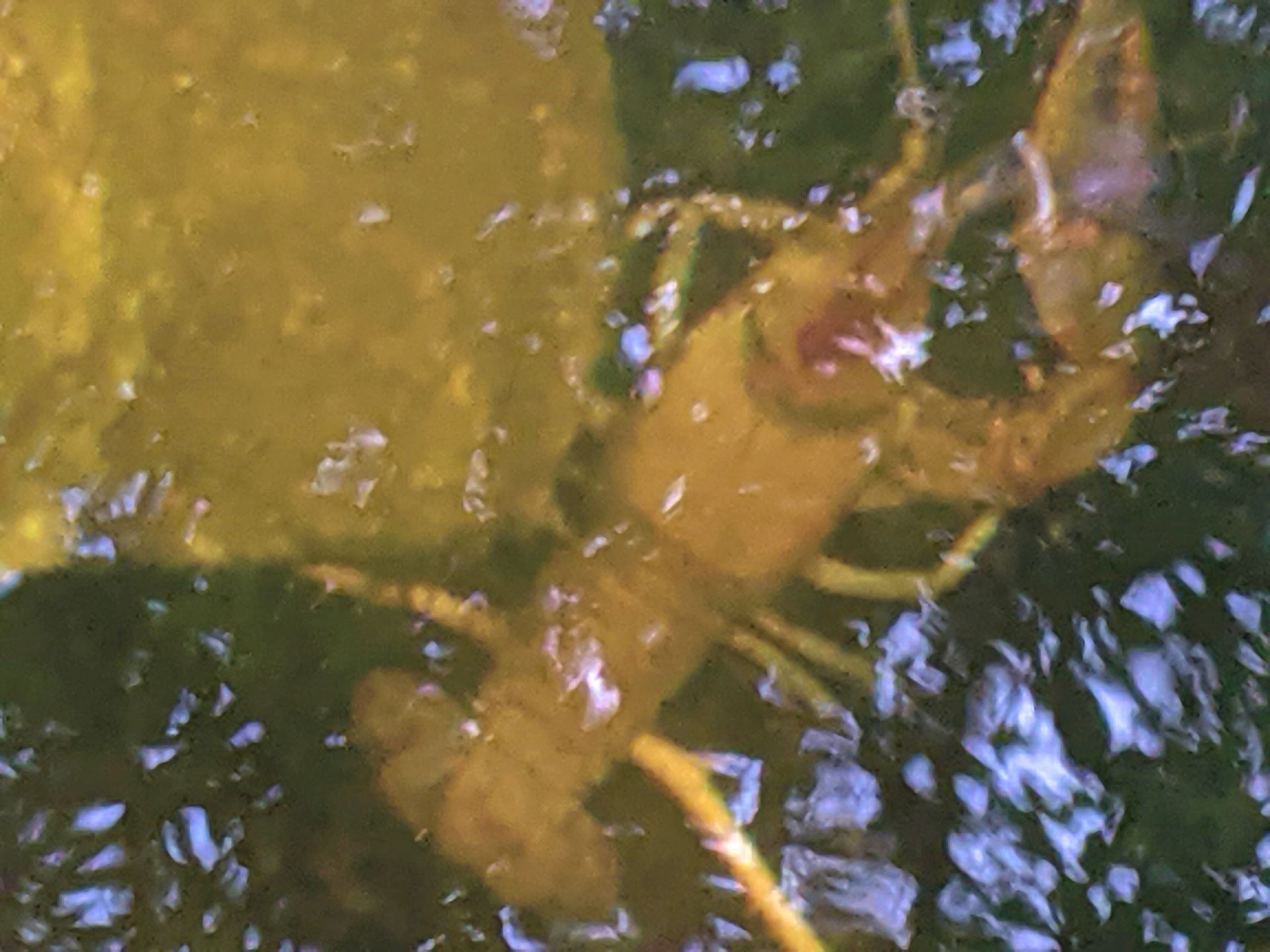
Yes, we do.
At the KLA, we are always trying to learn more about which species to watch for, and will add any species of concern to this page as we become aware.
The image on the right is a rusty crayfish, spotted in Dysart Bay in 2021. They are aggressive toward native fish. According to local lore, these have been around for some time but have not been problematic to date.
You have probably heard that ticks bearing lyme disease are moving into the area and are expected to be increasingly problematic in the coming years. Wear long clothing, use DEET-containing bug repellant, and check for ticks after spending time outdoors, particularly in wooded areas.
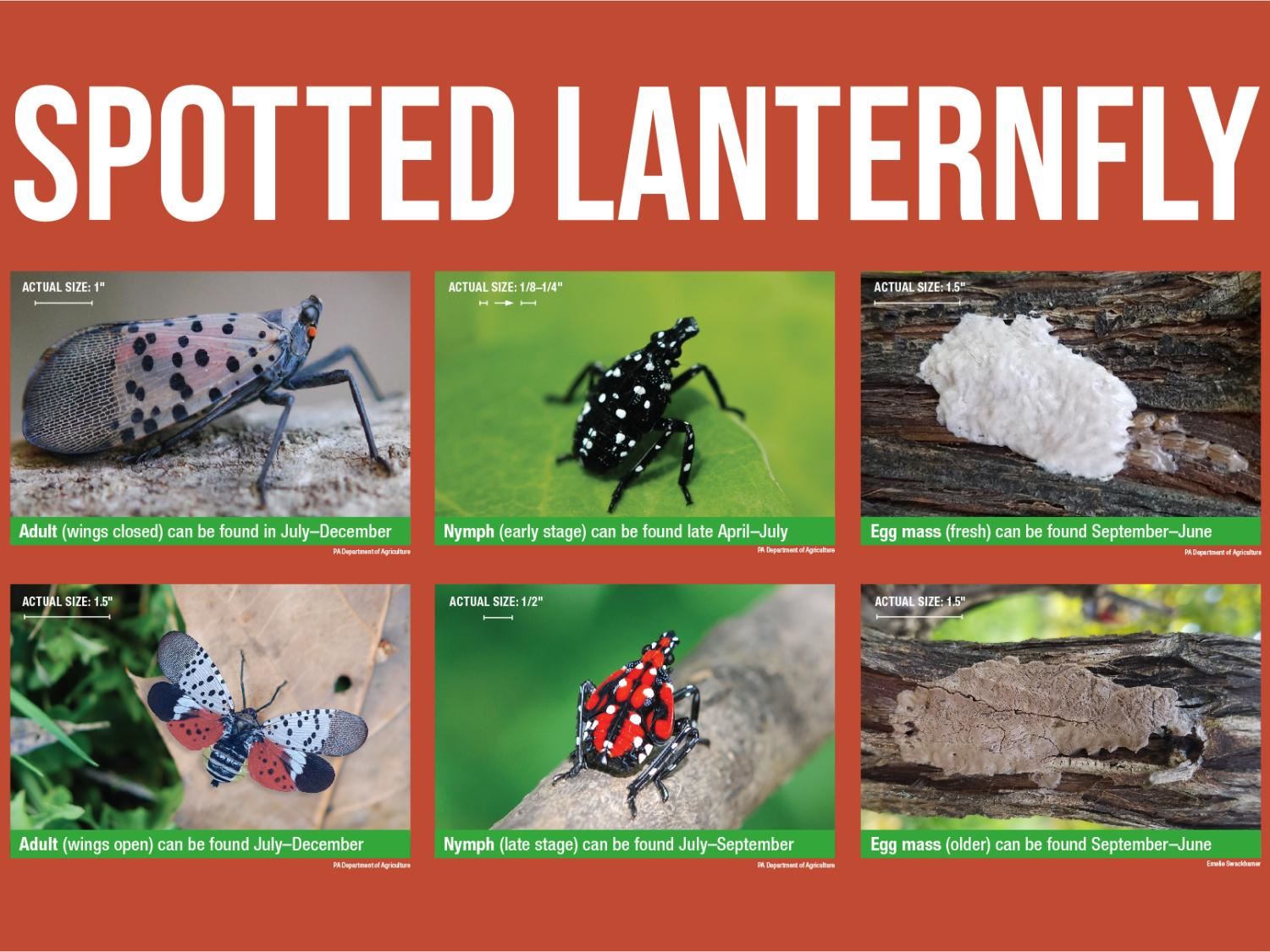
We are also aware of and keeping our eyes on so-called Chinese mystery snails (more on those below). And ecologists warn that we may soon encounter spotted lantern flies (image left from Penn State).
Help us out by keeping your eyes open for anything that looks suspicious and reporting it to us so we can look into it!
chinese mystery snailAs reported in the 2022 Wavelength and discussed at the 2022 AGM, a non-native snail known as the "Chinese Mystery Snail" has been found in Koshlong lake. Large numbers were collected in a sampling near Camp Wanakita in the past year. A 2019 article in the Minden Times describes the growing problem locally, and advises to collect, freeze and dispose of the snails. If you find any of these snails, please contact us so we can keep track of their presence in our lake and safely remove them. |
On your property: 1. Plant only native, non-invasive species. Watersheds Canada has an excellent native plant database, searchable by zone. 2. Purchase and burn only local firewood. 3. Watch for plants and insects that appear unusual to you, such as the lanternfly above. On your boat: 3. Whether it's a kayak, a fishing boat or a jet ski, if you are moving from one lake or river to another CLEAN, DRAIN AND DRY your craft before entering a new body of water! 4. Use only permitted baitfish species, and dispose of unused bait properly. 5. Watch for and report any fish or aquatic plant life that looks suspicious to you. |
|
- Home
- Environment
- Threats to Lake Health
- Invasive Species
Thanks to KLA member Rob Horsburgh for his photograph of Wallace Island used as the background photo throughout this site

